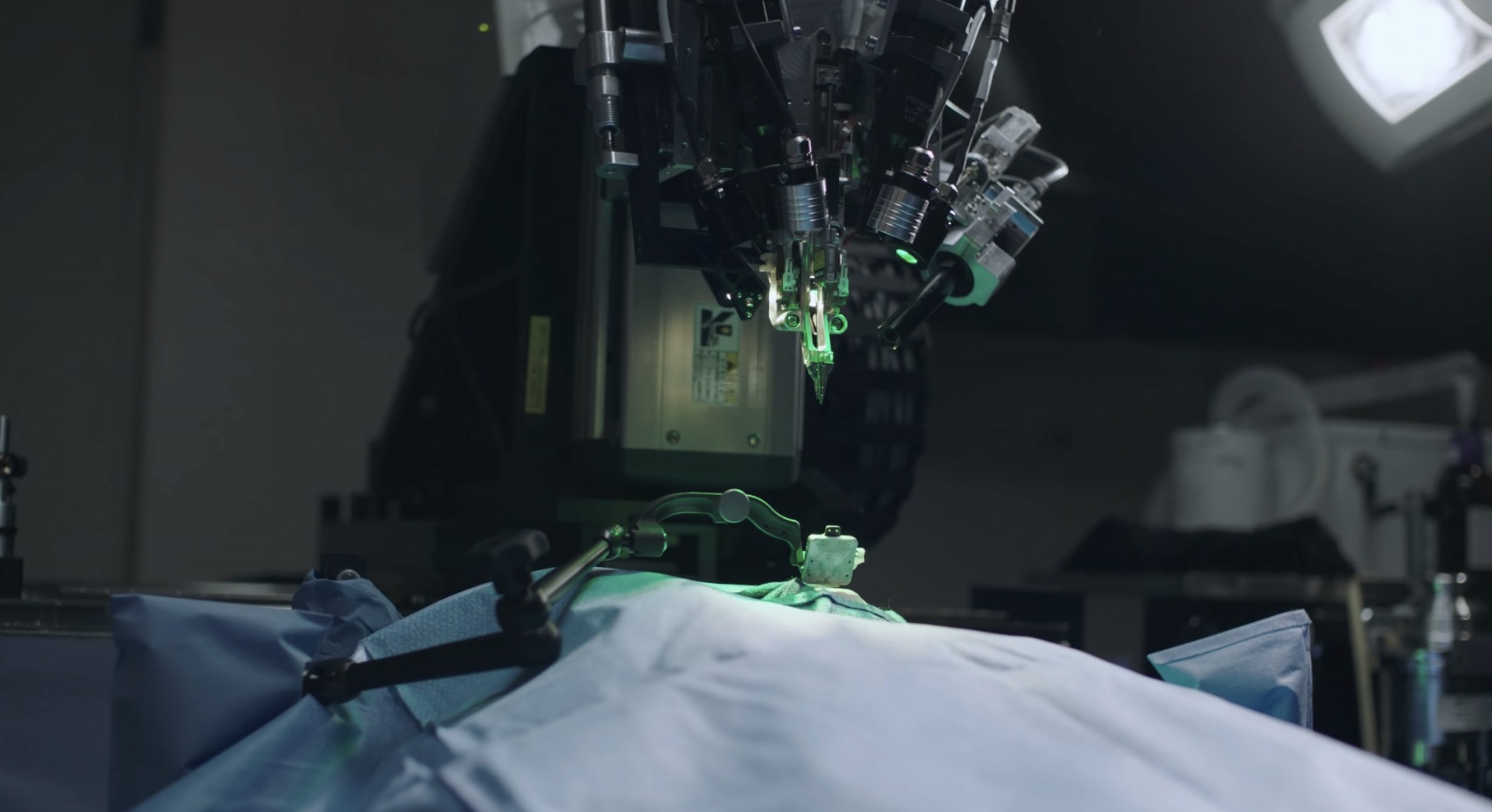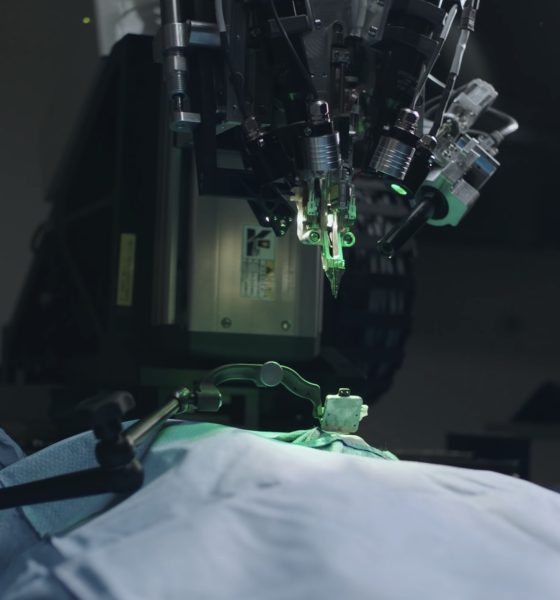During an interview with TED’s Chris Anderson, Elon Musk remarked that his brain-machine interface startup, Neuralink, would be solving brain and spinal injuries “for probably a decade.” Musk noted that the startup’s technology could even address health conditions like morbid obesity.
Experts have now stated that while the idea may seem farfetched and while the science is yet to be proven, using brain implants to cure morbid obesity is actually a plausible idea. It might seem impossible considering that Neuralink’s technology is still in development and human trials are yet to begin, but similar to Musk’s other ideas, such as landing an orbital rocket’s first stage on a drone in the middle of the ocean, the concept is not as farfetched as it seems.
In a statement to Insider, Professor Andrew Jackson from Newcastle University, an expert in neural interfaces, noted that Neuralink’s concepts are no more impossible than other claims about neurotechnology. “I don’t think it is any more implausible than other claims for the potential of neurotechnology,” he said
Jackson added that Neuralink’s brain implants are actually less invasive than other treatments for morbid obesity. Some procedures designed to solve morbid obesity today involve changing the shape and function of a patient’s digestive tract. Such surgeries are typically costly, and recovery tends to be painful.
Neuralink aims to design and develop a fully integrated Brain Computer Interface (BCI) system, which could enable a computer or other digital device to communicate directly with the brain. Micron-scale threads in the neural implant are inserted into areas of the brain, allowing the implant to read and potentially stimulate brain activity.
While Elon Musk has not discussed details on how Neuralink’s technology could tackle the issue of morbid obesity, University of Cambridge professor of metabolism and medicine Sadaf Farooqi noted that a particular region of the brain, the hypothalamus, is typically the one that drives an increase in appetite. If Neuralink can target specific areas of the brain, then addressing issues like morbid obesity would definitely be feasible.
“We and others have shown that in some people with severe obesity, it’s the function of a particular brain region, the hypothalamus, that’s really driving often an increase in appetite. If you could find a way to target that particular region and even those particular neurons that drive appetite, then in theory, a drug or a technology that did that could improve the lives of patients,” Farooqi said.
Neuralink is yet to receive approval for human testing, but the line of individuals who are willing to try out the company’s technology is long. During his TED interview, Musk stated that the emails Neuralink receives from people are heartbreaking, as many of them reveal stories of people who were cut at the prime of their life.
“The emails that we get at Neuralink are heartbreaking. I mean, they’ll send us just tragic (stories). You know, where someone was sort of, in the prime of life and they had an accident on a motorcycle and someone who’s 25 can’t even feed themselves. This is something we could fix,” Musk said.
Don’t hesitate to contact us with news tips. Just send a message to simon@teslarati.com to give us a heads up.

News
Tesla FSD fleet is nearing 7 billion total miles, including 2.5 billion city miles
As can be seen on Tesla’s official FSD webpage, vehicles equipped with the system have now navigated over 6.99 billion miles.

Tesla’s Full Self-Driving (Supervised) fleet is closing in on almost 7 billion total miles driven, as per data posted by the company on its official FSD webpage.
These figures hint at the massive scale of data fueling Tesla’s rapid FSD improvements, which have been quite notable as of late.
FSD mileage milestones
As can be seen on Tesla’s official FSD webpage, vehicles equipped with the system have now navigated over 6.99 billion miles. Tesla owner and avid FSD tester Whole Mars Catalog also shared a screenshot indicating that from the nearly 7 billion miles traveled by the FSD fleet, more than 2.5 billion miles were driven inside cities.
City miles are particularly valuable for complex urban scenarios like unprotected turns, pedestrian interactions, and traffic lights. This is also the difference-maker for FSD, as only complex solutions, such as Waymo’s self-driving taxis, operate similarly on inner-city streets. And even then, incidents such as the San Francisco blackouts have proven challenging for sensor-rich vehicles like Waymos.
Tesla’s data edge
Tesla has a number of advantages in the autonomous vehicle sector, one of which is the size of its fleet and the number of vehicles training FSD on real-world roads. Tesla’s nearly 7 billion FSD miles then allow the company to roll out updates that make its vehicles behave like they are being driven by experienced drivers, even if they are operating on their own.
So notable are Tesla’s improvements to FSD that NVIDIA Director of Robotics Jim Fan, after experiencing FSD v14, noted that the system is the first AI that passes what he described as a “Physical Turing Test.”
“Despite knowing exactly how robot learning works, I still find it magical watching the steering wheel turn by itself. First it feels surreal, next it becomes routine. Then, like the smartphone, taking it away actively hurts. This is how humanity gets rewired and glued to god-like technologies,” Fan wrote in a post on X.
News
Tesla starts showing how FSD will change lives in Europe
Local officials tested the system on narrow country roads and were impressed by FSD’s smooth, human-like driving, with some calling the service a game-changer for everyday life in areas that are far from urban centers.

Tesla has launched Europe’s first public shuttle service using Full Self-Driving (Supervised) in the rural Eifelkreis Bitburg-Prüm region of Germany, demonstrating how the technology can restore independence and mobility for people who struggle with limited transport options.
Local officials tested the system on narrow country roads and were impressed by FSD’s smooth, human-like driving, with some calling the service a game-changer for everyday life in areas that are far from urban centers.
Officials see real impact on rural residents
Arzfeld Mayor Johannes Kuhl and District Administrator Andreas Kruppert personally tested the Tesla shuttle service. This allowed them to see just how well FSD navigated winding lanes and rural roads confidently. Kruppert said, “Autonomous driving sounds like science fiction to many, but we simply see here that it works totally well in rural regions too.” Kuhl, for his part, also noted that FSD “feels like a very experienced driver.”
The pilot complements the area’s “Citizen Bus” program, which provides on-demand rides for elderly residents who can no longer drive themselves. Tesla Europe shared a video of a demonstration of the service, highlighting how FSD gives people their freedom back, even in places where public transport is not as prevalent.
What the Ministry for Economic Affairs and Transport says
Rhineland-Palatinate’s Minister Daniela Schmitt supported the project, praising the collaboration that made this “first of its kind in Europe” possible. As per the ministry, the rural rollout for the service shows FSD’s potential beyond major cities, and it delivers tangible benefits like grocery runs, doctor visits, and social connections for isolated residents.
“Reliable and flexible mobility is especially vital in rural areas. With the launch of a shuttle service using self-driving vehicles (FSD supervised) by Tesla in the Eifelkreis Bitburg-Prüm, an innovative pilot project is now getting underway that complements local community bus services. It is the first project of its kind in Europe.
“The result is a real gain for rural mobility: greater accessibility, more flexibility and tangible benefits for everyday life. A strong signal for innovation, cooperation and future-oriented mobility beyond urban centers,” the ministry wrote in a LinkedIn post.
News
Tesla China quietly posts Robotaxi-related job listing
Tesla China is currently seeking a Low Voltage Electrical Engineer to work on circuit board design for the company’s autonomous vehicles.

Tesla has posted a new job listing in Shanghai explicitly tied to its Robotaxi program, fueling speculation that the company is preparing to launch its dedicated autonomous ride-hailing service in China.
As noted in the listing, Tesla China is currently seeking a Low Voltage Electrical Engineer to work on circuit board design for the company’s autonomous vehicles.
Robotaxi-specific role
The listing, which was shared on social media platform X by industry watcher @tslaming, suggested that Tesla China is looking to fill the role urgently. The job listing itself specifically mentions that the person hired for the role will be working on the Low Voltage Hardware team, which would design the circuit boards that would serve as the nervous system of the Robotaxi.
Key tasks for the role, as indicated in the job listing, include collaboration with PCB layout, firmware, mechanical, program management, and validation teams, among other responsibilities. The role is based in Shanghai.
China Robotaxi launch
China represents a massive potential market for robotaxis, with its dense urban centers and supportive policies in select cities. Tesla has limited permission to roll out FSD in the country, though despite this, its vehicles have been hailed as among the best in the market when it comes to autonomous features. So far, at least, it appears that China supports Tesla’s FSD and Robotaxi rollout.
This was hinted at in November, when Tesla brought the Cybercab to the 8th China International Import Expo (CIIE) in Shanghai, marking the first time that the autonomous two-seater was brought to the Asia-Pacific region. The vehicle, despite not having a release date in China, received a significant amount of interest among the event’s attendees.










